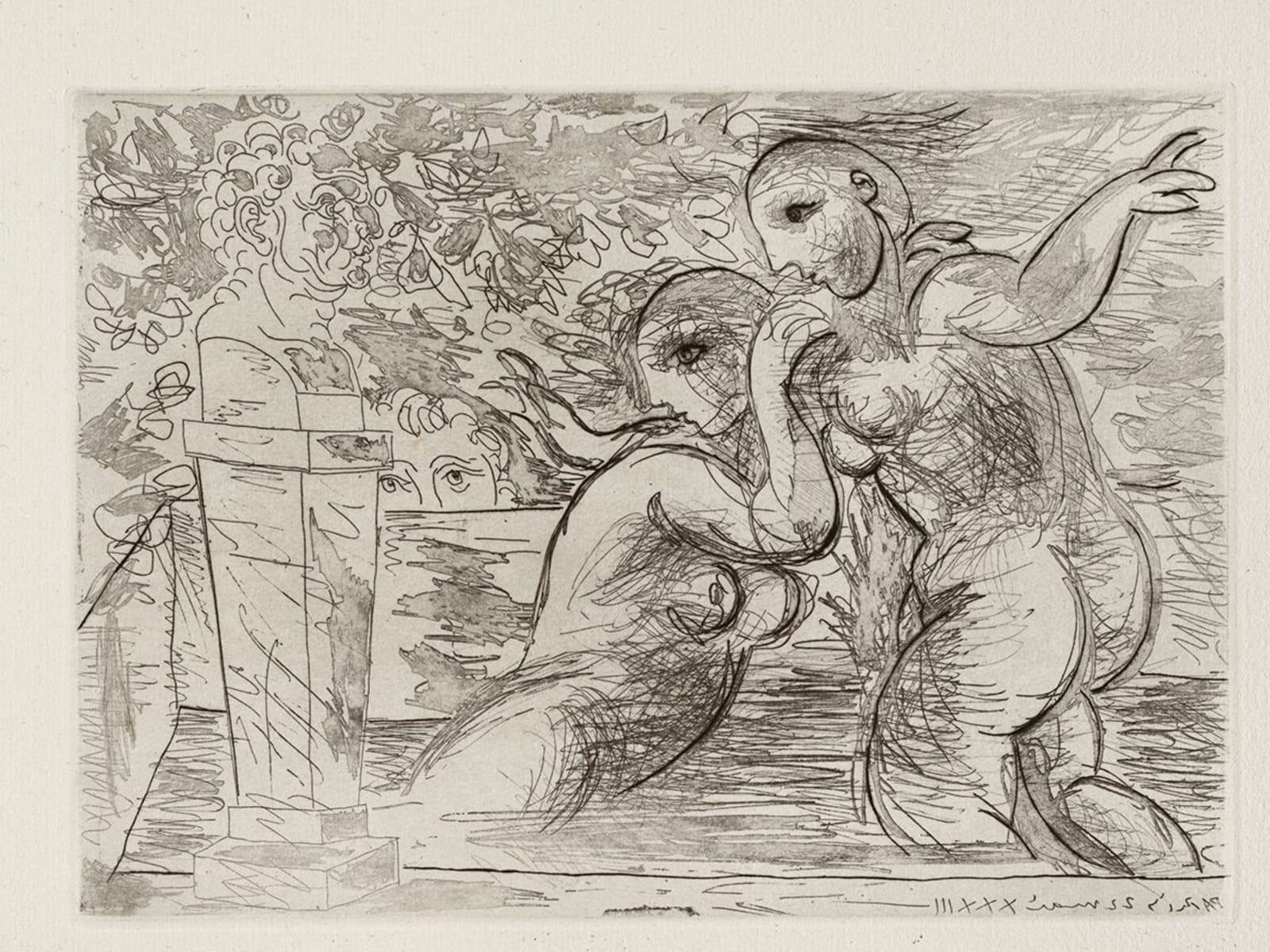This exhibition presents La Suite Vollard, one of the most ambitious and essential graphic cycles of the 20th century. It is a suite of 100 plates by Pablo Picasso, of which Frederick Mulder Ltd has the rare privilege of offering a complete suite as well as individual impressions. We have decided to present 28 out of the 100 prints encompassing the complete suite in the VR exhibition below, which we hope you will be enjoying, and will of course be delighted to email you details and images of the complete set on application. The individual impressions available for sale are presented after the VR show. Both the complete suite and the inidvidual impressions are coming from the Vollard Estate via the Petiet Estate, so an impeccable provenance.
-

-
La Suite Vollard stands as testament to Picasso's genius and is widely regarded as one of the greatest achievements in print. Made up of one hundred subjects, the suite is named after its publisher Ambroise Vollard and is a survey of Picasso's preoccupations from 1930 to 1937. It is a precursor to the harrowing imagery of Guernica and the symbolism of Picasso's great etching, La Minotauromachie.
The set came about as part of an exchange agreed between Picasso and Vollard: a Renoir and a Gauguin for Picasso, in return for 100 etched plates and the rights to publish them. Conceived in 1934, the deal was finally struck in 1936 and Picasso retrospectively chose 97 plates from those he had produced since 1930. He added a further three portraits of Vollard in 1937 to bring the group to 100 prints. The set was printed by the master print-maker Roger Lacourière, with most of the intaglio prints being etchings or drypoint on Montval paper specially watermarked either 'Vollard' or 'Picasso'. Lacourière also taught Picasso 'sugar-lift' aquatint which allowed the artist to create richly textured areas such as that to be seen to stunning effect in Minotaure aveugle guidé par Marie-Thérèse au Pigeon dans une Nuit etoilée (Bloch 218, SV 81).
-
-
Because of the retrospective nature by which Picasso chose the 100 subjects, a theme or narrative is not immediately apparent. However, when viewed as a whole it is clear that the set is heavily autobiographical and can be separated into five distinct themes: The Battle of Love, The Sculptor's Studio, Rembrandt, The Minotaur, and the Portraits of Vollard. During the decade of 1927-37, Picasso had embarked on a passionate affair with his young mistress Marie-Thérèse, who gave birth to their daughter, Maya, in 1935. This was a period of great productivity and Marie-Thérèse's oval face and Roman nose recur throughout, all the time playing out alongside the devastation of Picasso's failing marriage to Olga.
Stylistically and often in subject, the prints of La Suite Vollard are neoclassical, most likely inspired by Picasso's trips to Rome, Florence and Naples. In 1931 Picasso had bought the château Boisgeloup near Gisours, where he dedicated himself to sculpture and he etched the sculptor frequently; reclining, contemplative, alongside his model and his statue - four of our individual impressions for sale deal with this theme. Rembrandt meanwhile can be seen observing, giving counsel. This is in stark contrast to the appearance of the Minotaur, Picasso's alter ego, whose exuberant lifestyle is by turns violent, tormented, lustful, submissive and defeated, and which finally culminates in his loss of sight as in the four so-called blind minotaurs at the end of the set.
-

-

-

-

-
Tragically, Vollard was killed in a car crash in 1939 before he had a chance to release the edition and, combined with the outbreak of World War II, it meant that the completed edition was left stacked in Vollard's Paris apartment for several years. Sometime between 1942 to 1945, the Vollard Estate, indeed the entire edition of the Vollard Suite, was bought by Henri Petiet, another renowned print dealer, who held on to them until the 1950s when he began sending batches of 100 or 200 to Picasso for him to sign. Picasso brought this to an end in the 1960s leaving important number of the impressions still unsigned.
La Suite Vollard was published in an edition of 303, of which 3 were on velum all signed in red crayon; 260 sets were on a smaller format paper (of which our complete set is one) and 50 on a larger sheet. Only a fraction of the sets that were released were done so as a complete group; more often prints were sold individually. Those that were complete were often subsequently broken up or acquired by major institutions, such as MOMA and the British Museum.
We are fortunate to have been able to acquire both a complete suite as well as individual impressions, which both represent a wonderful opportunity to see and own one of the great contributions to print-making, and equally one of the finest works of art to reflect on the tortuous, glorious nature of creativity both in art and life.
-

-








